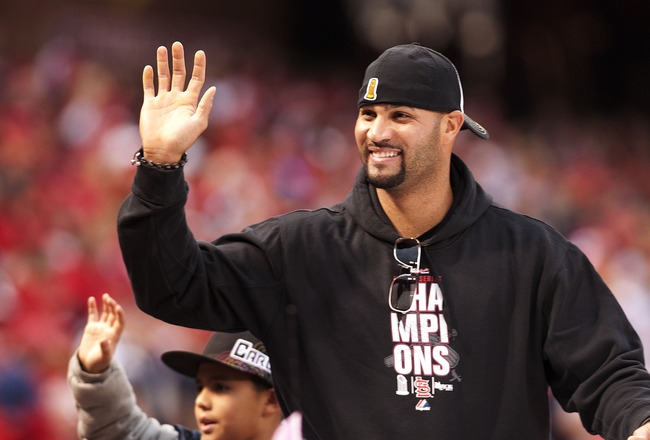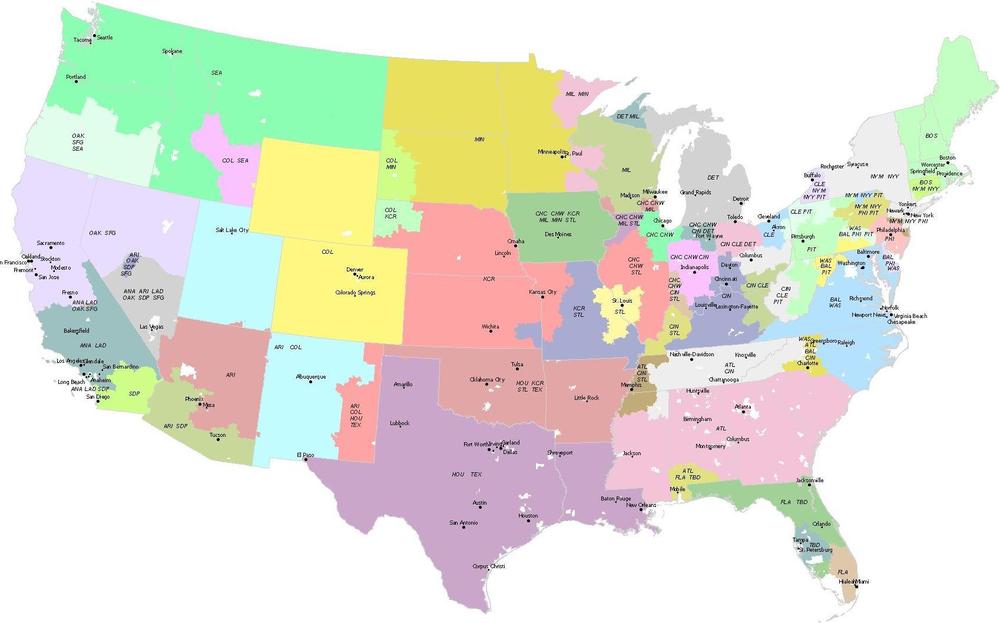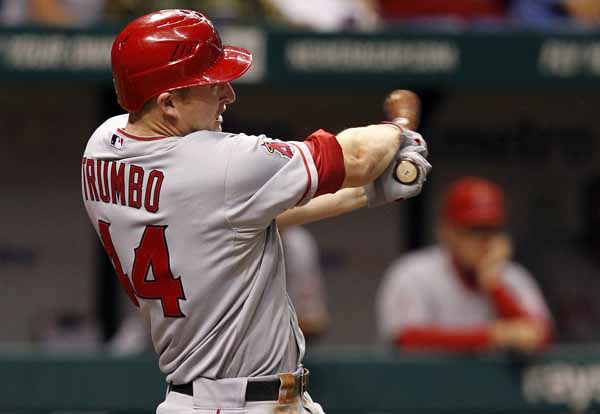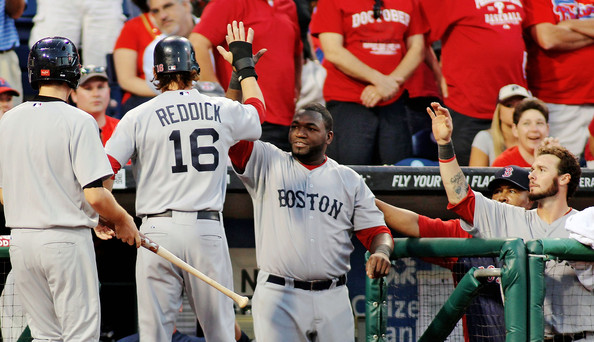 Indians Archive
Indians Archive  A Lazy Sunday in A Brave New World
A Lazy Sunday in A Brave New World

The Winter Meetings have come and gone and while all it may have done is re-affirm our greatest fears about the role that local TV revenue is going to play in the coming decade to further separate big-market, mid-market, and small market teams, the Indians’ brass returned from the North Coast with essentially the same roster that they had when they arrived in the Lone Star State. While calling it “full of sound and fury, signifying nothing” for the Tribe may be a little overdramatic, the Indians’ trip to Dallas mainly netted them some airline miles, some hotel points, and (hopefully) some groundwork on some moves to come. Because moves for the Tribe at the Winter Meetings were only hinted at, with Antonetti’s unfortunate comment that a trade proposal that would never be guessed only prompted speculation in all corners when the Indians left Dallas without consummating a deal, either on the FA market or via trade.
That’s not to say that this “unbelievable” trade proposal isn’t something that could still crystallize, but the Indians figured to be quiet at the Winter Meetings and…well, they were. So, the inactivity in Dallas should come as no surprise. Of course, that didn’t prevent all of Cleveland (OK…a small portion of Clevelanders) from watching with bated breath this whole “El Hombre” saga play out as the idea that Pujols-to-Marlins would have meant that mean that Gaby Sanchez could have been made available, something that’s been alluded to in this space for a couple of months, with “could this get Gaby” scenarios popping up everywhere.
Alas, as Pujols went to Orange County (prompting the immediate “GET TRUMBO” or “TRADE FOR MORALES” cries…with both options underwhelming me, but I’ll get to that), the Indians found themselves likely to be less than enthused about Pujols coming over to the AL and (much more importantly) likely terrified at how the Angels were able to sign Pujols AND CJ Wilson and how the activity of the Halos is only the most recent indication that the landscape of MLB is changing. And those changes are not likely to benefit the Cleveland Indians or the vast majority of the league.
Before we get to that Angels’ issues, let me point out an article that has stuck with me for the last couple of months as it was contained in an SI piece from the magazine, touting the Rangers’ presence in the World Series. The whole piece was written with the idea that the Rangers weren’t the Yankees or the Red Sox and had made all of the right moves to put themselves in the position to be playing for their first World Series Championship. While none of that is untrue (the Rangers were adept at acquiring talent and mining some hidden gems), there was a passage that stood out and it’s one that I’ve been unable to forget, with the events of the past week bringing them racing back to the forefront.
The paragraphs of interest have to do with the Rangers’ new TV deal:
But the Rangers’ biggest off-season signing was a monster $1.6 billion TV contract with Fox Sports Southwest that, starting in 2015, will bring them more than $80 million in annual revenue. It’s the kind of deal that helped turn the Yankees and the Red Sox into economic superpowers; both franchises have been enriched over the last decade by extremely lucrative local television income. The Rangers will not be a middle-class team for much longer: Their TV money will put them in a position where no free agent is out of their price range—including Albert Pujols and Prince Fielder, who will be the biggest fish on the market this winter.
 That was from 2 months ago and, while it was the Angels (and not the Rangers) who netted Pujols with TV money, here is the money quote on the TV deal – “It’s the kind of deal that helped turn the Yankees and Red Sox into superpowers; both franchises have been enriched over the last decade by extremely lucrative local TV income” – with the article going on to point out that the Rangers play in the 5th largest media market in MLB. Again, that deal will bring the Rangers “more than EIGHTY MILLION DOLLARS in annual revenue” just for the rights to broadcast Rangers’ games on Fox Sports Southwest.
That was from 2 months ago and, while it was the Angels (and not the Rangers) who netted Pujols with TV money, here is the money quote on the TV deal – “It’s the kind of deal that helped turn the Yankees and Red Sox into superpowers; both franchises have been enriched over the last decade by extremely lucrative local TV income” – with the article going on to point out that the Rangers play in the 5th largest media market in MLB. Again, that deal will bring the Rangers “more than EIGHTY MILLION DOLLARS in annual revenue” just for the rights to broadcast Rangers’ games on Fox Sports Southwest.
Now, we’ve all seen that the Angels announced (after the signings of Pujols and Wilson) that they have a deal in place that NEARLY DOUBLES what the Rangers got last off-season. It will pay them $150 million annually for the next 20 years and we saw late last week what that new TV deal in Anaheim allows the Angels to add – namely the top hitter and top starting pitcher on the FA market – with much of the risk associated with it. Lest you forget, the Angels play in the 2nd largest market and, though they share that market with the Dodgers, Fox Sports West will pay them $3 Billion over the next 20 years for the rights to broadcast their games.
If the Rangers’ deal sent shivers down your spine as a fan of the Indians, the Angels deal should have sent you into full-blown shock as this Brave New World of local TV money figures to initiate a seismic shift in MLB teams, in terms of revenue, ability to take risks, and the FA market as a whole. Maybe you’re thinking that the Angels are a “hot ticket” with the Dodgers in disarray and that local interest is at an all-time high, justifying this amount of money. Well…no, as they got this deal despite, as Bill Shaikin passes along (in the piece that is linked again, because you should read it), having “the second-lowest local television ratings among major league teams last year, according to Sports Business Journal.”
Seriously…
And that fact on the Angels’ ratings last year pull into sharp focus what the TV companies are doing here as it doesn’t matter necessarily how many TV’s are tuned into a channel, but how many TV customers (people who pay their cable/satellite bills) have that channel that they pay for on their cable bill. To put that another way, it doesn’t matter how many people are watching the Indians or the Angels or the Rangers, it matters how many people are paying a portion of their TV bill for the chance to watch Tribe games. Because that number is lower in Cleveland than it is in LA or Dallas or…well, this could go on for a while, the rights to broadcast those games are going to be higher because the revenue that the cable company brings in is higher based on the amount of TV sets (or cable/satellite customers) in that local market.
Ultimately, live sporting events are really the last thing that anyone watches live anymore (remember the Flash Mob dancing guy in the train station commercial from Tribe games or Jimmy Fallon embarrassing himself during the MLB playoffs…name a time when you said “not this commercial again” other than during live sporting events) and so, yes these cable operators are going to pay a premium to air these games, particularly with MLB’s rules on local broadcasts.
Where do you think they’ll be willing to spend the most money?
Perhaps where the largest number of TV viewers exists?
Notice where these deals are getting done right now?
LA, Dallas…you know, the largest TV markets.
Go read that LA Times piece again (or if you haven’t yet as this is the last chance) and realize that the final line from that article is that “the bidding between Fox and Time Warner Cable for the Dodgers’ television rights is about to start, and the over-under is $4 billion” and that it is all based on the cable/satellite subscribers in a particular market.
 So, Fox and Time Warner will throw perhaps MORE money at the Dodgers (perhaps $200M/year) to broadcast their games…does anyone want to guess what kind of revenue the Yankees get from YES, given that NY is larger than LA and one of the offerings on MY cable package is to order the YES network as a stand-alone channel?
So, Fox and Time Warner will throw perhaps MORE money at the Dodgers (perhaps $200M/year) to broadcast their games…does anyone want to guess what kind of revenue the Yankees get from YES, given that NY is larger than LA and one of the offerings on MY cable package is to order the YES network as a stand-alone channel?
Perhaps MLB Advanced Media, with the Internet package or the streaming video that’s available (out of market) will level this playing field a little bit, but remember that the revenue from those deals is split evenly between the 30 teams and that the great majority of the money that these teams receive for TV comes from their local TV deals, all of which are/will be based on the amount of people in a geographic area. Additionally, it’s unlikely that Fox is signing these 20-year deals if they think that the TV landscape within MLB is going to change radically in the near future.
Ultimately, the Angels’ new TV deal sets the precedent (as if the Rangers deal didn’t) for local TV deals and certainly throws a wrench into the idea that teams in MLB occupy anything close to a level playing field, which is only going to get worse as more TV deals are re-negotiated or bid on in the larger markets. Granted, not every team is going to take advantage of these inherent market advantages, but if FOX Sports or Time Warner (who gave the Lakers a $3 BILLION contract to air their games for the next 20 years, an increase of the Lakers’ TV revenue by FIVE TIMES, likely prompting this Fox-Angels deal) are going to be setting up bidding wars in most of the larger markets across America, wouldn’t it stand to reason that the markets with the most TV sets (and here’s a reminder of market size, both in Metro Areas and Combined Statistical Areas) are going to see the biggest influx of cash in a TV deal…and cash that is guaranteed?
What does that mean to the Indians?
In the long term, in light of the recent leveling of the playing field at the place where it was LEAST needed (in the draft and with signing bonuses) in the recent CBA, it means that the Indians are going to be swimming upstream to capture their first World Series Championship since 1948, as if they weren’t already. Maybe this is depressing to a level that many can’t stand in terms of the system being broken and actually getting worse, but luckily for the Indians, they operate in a division in which two of the higher payroll teams can’t seem to get out of their own way recently, with the White Sox officially rebuilding, and the Twins signing Jamey Carroll (with all due respect to Carroll…who fell into the “Casey Blake, Inexplicably Reviled” Category to quickly in Cleveland) to be their everyday SS.
In the short term, with a group of young players currently on the roster all around the same age and under similar levels of control, the Indians are betting that (as we saw in 2007) once a young, talented team gets into the playoffs, as they say, anything can happen. With an extra Wild Card berth in play now, maybe the Indians can sneak into the playoffs even if they don’t win their division, though that doesn’t look likely now with two heavyweights in the AL East and the AL West, but it certainly brings the focus back to the Indians as they stand today.
Unfortunately, we are in a place that is not unfamiliar to us as we’re left to play the connect-the-dots game of “if this guys does this, then maybe we can do this” and for whatever reason the prospect of giving a 3-year deal to fair-to-good players like Josh Willingham or Mike Cuddyer is becoming less appealing as this off-season goes forward. That’s not to say that I think that the Indians should stand pat where they are (far from it), as I’m of the belief that improving 1B is a must (and color me uninspired by the idea that Santana, Brantley, Duncan, and Donald somehow combine to a level of “improvement”) as is the idea that they still need an OF that is more of a starting OF than a 4th OF, given the injury history of the current troika of OF (and particularly Sizemore) and the concerns over Mike Brantley as an legitimate everyday OF.
Starting with 1B, the obvious names of Mark Trumbo and Kendry Morales emerged with the Pujols deal, but with Morales’ injury history (combined with the current injury concerns on the Tribe), I’d be less than inclined to look at Morales as much more than a buy-low player, if the Angels really are willing to sell low…and it doesn’t look like they are as they will tender him a contract. Now that doesn’t mean that he won’t be available, but he would likely come with a $4M price tag and no guarantee that he’d be ready for Opening Day. After holding out the tiniest sliver of hope that Nick Johnson could return to form and seeing that he couldn’t, I’d pass on Morales.
As for Trumbo, while his gaudy HR total (29) in his rookie year draws some eyes, to look at his overall line is to see a player that doesn’t look all that different from our own Matt Mattola. Since they played in a different number of games, here is how the rate stats for each compare in 2011: Trumbo – 2011
Trumbo – 2011
.254 BA / .291 OBP / .477 SLG / .768 OPS / 113 OPS+ / .327 wOBA
10.7 XBH%, 20.9%, 4.4 BB%, and 5.1 HR%
LaPorta - 2011
.247 BA / .299 OBP / .412 SLG / .711 OPS / 97 OPS+ / .309 wOBA
9.1 XBH%, 22.6 K%, 6.0 BB%, and 2.9 HR%
Now, did Mark Trumbo have a better 2011 season than LaPorta did?
Of course (and Trumbo’s a year younger), but Trumbo posted a lower OBP than LaPorta with a similar K rate, a lower BB rate, and hitting about the same amount of extra-base hits as LaPorta per Plate Appearance. If we’re looking for a decided upgrade from LaPorta, as nice as Trumbo’s 29 HR last year looks, there are some major red flags there. According to some reports, Trumbo may not even be available as he’s allegedly being pegged to play 3B, so this may all be moot, but Trumbo seems to me to be a player that (to borrow a Wedgism) “ran into one” more often that LaPorta did last year, with the two players being more similar than you would hope if Trumbo is being seen as an obvious upgrade.
What does that mean in the search for a 1B?
Well, it means that we still wait for the other chips (Fielder, Pena, etc.) to fall to see what may be available or to look at a player like the Mets’ Daniel Murphy, whose 2011 actually compares favorably with the two names attached to the Indians as “solutions” at 1B/LF:
Daniel Murphy – 2011
.320 BA / .362 OBP / .448 SLG / .810 OPS / 125 OPS+ / .350 wOBA
Josh Willingham – 2011
.246 BA / .332 OBP / .477 SLG / .809 OPS / 121 OPS+ / .350 wOBA
Mike Cuddyer - 2011
.284 BA / .346 OBP / .459 SLG / .805 OPS / 121 OPS+ .354 wOBA
Maybe those numbers from Murphy are an aberration and maybe he is just a Jason Donald type who has seen success in MLB, but his cost would certainly be less than that tied to Willingham or Cuddyer. Now, it is worth mentioning that Murphy tore his left ACL last August (which would come into play given the other injury issues on the roster), but last year he played 1B, 2B, 3B, and LF for the Mets, perhaps providing some versatility that the Indians could utilize. There have been rumblings that the Mets are willing to shop him (and they need bullpen help) despite the fact that he won’t be arbitration eligible until after next season and is under club control through the 2015 season, so perhaps the Indians could find a match there to add a player that may be as productive (if not as well-known) as Cuddyer or Willingham and one who wouldn’t be on the downslope of his career and represents more of a long-term addition to the burgeoning core. While it is true that Murphy is LH, if he’s not going to cost the Indians a 3-year deal at $8M to $10M a year and provide the versatility (and perhaps production) that looks so attractive with Willingham and Cuddyer, his is a name to remember.
 Another name to consider came by way of LGT’s Adam Van Arsdale, who mentioned Boston’s Josh Reddick as a possible target if the Red Sox are looking to upgrade their bullpen. As is the case with Daniel Murphy, Reddick may not have the cache of a Willingham or Cuddyer, but considerwhat B-Pro’s Kevin Goldstein wrote recently about Reddick and fellow Boston OF Ryan Kalish:
Another name to consider came by way of LGT’s Adam Van Arsdale, who mentioned Boston’s Josh Reddick as a possible target if the Red Sox are looking to upgrade their bullpen. As is the case with Daniel Murphy, Reddick may not have the cache of a Willingham or Cuddyer, but considerwhat B-Pro’s Kevin Goldstein wrote recently about Reddick and fellow Boston OF Ryan Kalish:
Kalish and Reddick have come up together through the Red Sox system and have similar potential as corner outfielders. Kalish is the more athletic of the pair, but Reddick has more power and the stronger arm. As of right now, Reddick is the starting right fielder in Boston, but as one scout put it, “They’re both good enough to play every day in the big leagues… just not for the Red Sox.” Both could be involved in potential deals that return older, more expensive upgrades.
Now, everyone remembers Ryan Kalish because he played Pete Rose to Carlos Santana’s Ray Fosse (to critical derision) a couple of years ago, but Reddick is intriguing as he’s 24 years old, was ranked as the 75th best prospect in MLB prior to the 2010 season and is coming off of a 2011 season in which he posted a .784 OPS and a .335 wOBA and while those numbers may not jump off of the page, the Indians (still) need a versatile OF. Reddick played all three OF positions last year and (though he too is LH) could slide into the LF/insurance for Grady spot that is currently occupied by Duncan, Donald, and Zeke.
Both Murphy and Reddick could represent the long-term options that Gaby Sanchez would (hey Prince…have you met Ozzie?) and adding a player like them would benefit the team…as would Marlon Byrd, who may be more available with David DeJesus is on the North Side. If it seems sad that these are the players that are being brought up, realize that the Indians need to be cognizant of their current state, but also the future incarnations of the team, particularly in light of the new TV deal in Anaheim (and Arlington) and the money that’s going to be flowing through the FA market, perhaps at a rate that is going to (gasp) increase.
Regardless of how depressing the TV deal in Anaheim may be for the long-term health of the sport we love, there are still some moves to be made by the Tribe and, as much as most in the local media can’t get their FA blinders off as they seem to ONLY follow these FA, the Indians still have some fungible pieces (both Perezes, Cord Phelps, perhaps Joe Smith) that could re-make the parent club’s roster to make it more competitive not only for 2012 but beyond.
Those moves might amount to “tweaking” or could be full-scale “reshuffling” (in the bullpen), but the Indians have the opportunity to make a push in the AL Central as their young players mature and establish themselves. How they augment that group of young talent could go a long way in determining when the next legitimate playoff shot comes on the shores of Lake Erie, particularly considering a TV revenue landscape in MLB that is spinning wildly out of control.
- NBA Announces 2013-2014 Schedule
- Browns Ink Sharknado
- Sharknado A No-Show For Rookie Camp
- Trent Richardson Out Until Training Camp
- Browns Sign Brandon Jackson
- Carrasco Suspended Eight Games
- Browns Add to Wide Receiver Depth with David Nelson
- Browns Need to Learn from Past Draft Mistakes
- Browns Release Chris Gocong and Usama Young
- Browns Missing on Grimes Disappointing, But Not The End
The TCF Forums
- Chris Grant's first 3 drafts
Kingpin74 (Tuesday, January 21 2014 10:13 AM) - The 2014 Offseason Thread
googleeph2 (Tuesday, January 21 2014 9:36 AM) - 2015 Recruiting
furls (Tuesday, January 21 2014 6:57 AM) - Mike Brown
YahooFanChicago (Monday, January 20 2014 11:15 PM) - Movies coming out
HoodooMan (Monday, January 20 2014 9:34 PM) - 2014 Hoops Hockey Hijinx
jpd1224 (Monday, January 20 2014 4:44 PM) - 2014 Recruiting
jclvd_23 (Monday, January 20 2014 2:26 PM) - Wish List - #4 Pick
Hikohadon (Monday, January 20 2014 1:26 PM) - Official- Browns Coach Search/Rumors
OldDawg (Sunday, January 19 2014 6:48 PM) - #1 overall pick Anthony Bennett
TouchEmAllTime (Sunday, January 19 2014 1:28 PM)


